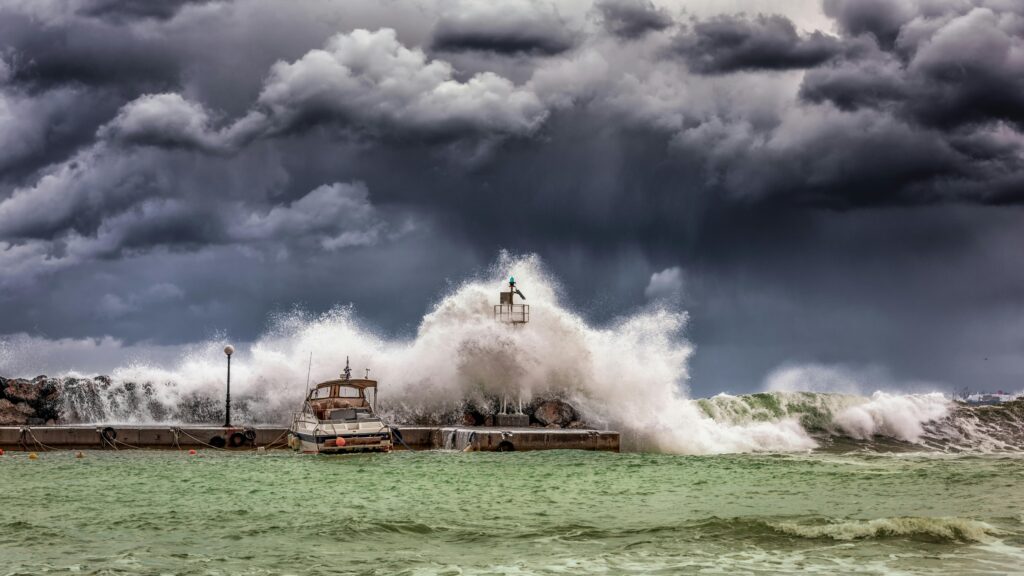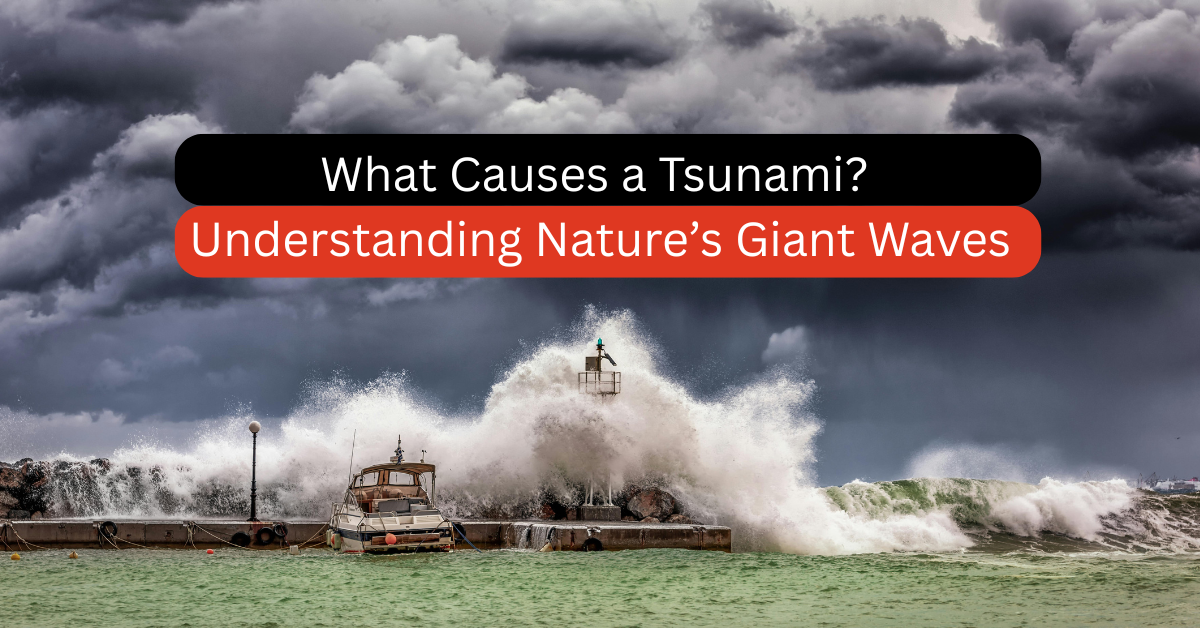Tsunamis are among the most powerful and destructive natural events on Earth. Often misunderstood as just “big waves,” tsunamis are far more complex and dangerous. But what exactly causes them? Let’s break it down.

The Root Cause: Sudden Displacement of Water
A tsunami begins when a massive amount of water is suddenly displaced in the ocean. This can happen when the seafloor moves abruptly, usually due to tectonic activity—the shifting of the Earth’s plates.
The most common causes include:
1. Underwater Earthquakes:
Most tsunamis are triggered by undersea earthquakes, especially those along subduction zones—areas where one tectonic plate slides beneath another. When these plates shift suddenly, they can lift or drop large sections of the seafloor. That motion pushes the water above it, setting off waves that can travel across entire oceans.
For a tsunami to form, the earthquake typically needs to be:
- A magnitude 7.5 or higher
- Shallow (less than 70 km deep)
- Located beneath or near the ocean floor
2. Volcanic Eruptions
Explosive underwater or coastal volcanoes can also generate tsunamis. When a volcano erupts violently or collapses, it can force water outward, creating fast-moving waves. The 1883 eruption of Krakatoa in Indonesia is a historic example—it caused tsunamis that killed tens of thousands of people.
3. Landslides
Large landslides—either underwater or on coastlines—can also displace enough water to trigger a tsunami. A cliff collapsing into the sea or a section of the seafloor sliding downward can send waves racing across nearby waters.
4. Glacial and Iceberg Collapses
In polar regions, large chunks of ice breaking off glaciers or collapsing into the sea can trigger localized tsunamis. While usually smaller in scale, these events can still be hazardous to nearby communities and marine traffic.
How Tsunamis Travel?
Once generated, tsunami waves can travel at speeds of up to 500–800 km/h (310–500 mph) across deep oceans. In open water, they may go unnoticed because of their low wave height. But as they approach shallower coastlines, they slow down and grow in height, potentially becoming towering walls of water.
Tsunamis are not caused by storms or tides, but by sudden, violent disruptions beneath or near the ocean. While we can’t prevent them, understanding their causes helps us prepare and respond effectively.
With better early warning systems and global cooperation, we can reduce the risk to human life and coastal communities.

